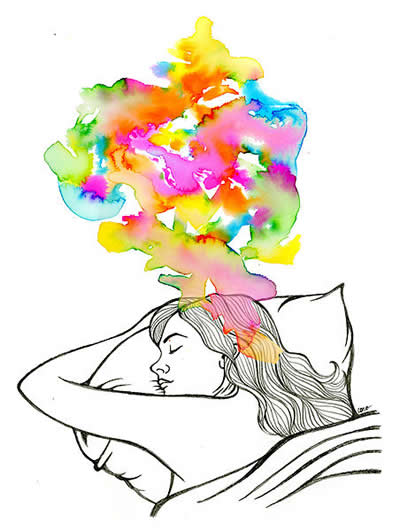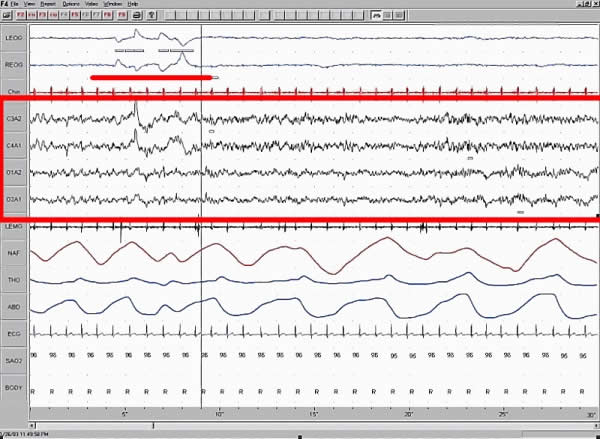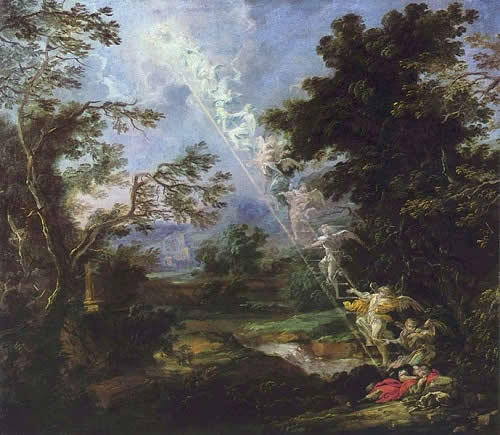Positive Health Online
Your Country

Dream Sonata: It More than Meets the Mind
by Rajgopal Nidamboor(more info)
listed in psychospiritual, originally published in issue 284 - February 2023
Originally published in thehimalayantimes.com
https://thehimalayantimes.com/opinion/dream-sonata-it-more-than-meets-the-mind
There isn't anyone who hasn't delved into the essence of dreams since the dawn of civilisation. Our ancients believed that dreams were not only a conduit between our material world and the spiritual realm, or divinity, they also thought that they divulged certain oracle-like propensities.
https://en.wikipedia.org/wiki/File:REM-s%C3%B8vn.jpg
Oneirology: An illustration to showcase the brain activity during REM-sleep.
Credit: Wikipedia – Author Lorenza Walker
A study published in The Journal of Neuroscience on the mechanisms that lie beneath dreaming – aside from the compelling association that dreams have with our memories – brings to the fore new insights. The research team enrolled 65 students to spend two successive nights in their laboratory. The students were allowed to sleep, during the first night, while they got acclimatized to the sound-proof and temperature-controlled milieu. The researchers measured the students' brain waves, the subsequent night, while they slept.
https://en.wikipedia.org/wiki/File:Sleep_EEG_REM.png
Screenshot of a polysomnographic record (30 seconds) representing Rapid Eye
Movement Sleep. EEG highlighted by red box. Eye movements highlighted by red line.
Credit: Wikipedia – Author MrSandman
Our brain experiences four types of electrical brain waves: 'delta', 'theta', 'alpha' and 'beta.' Each represents a different velocity of oscillating electrical voltages; they are recorded on electroencephalography (EEG). This was employed to measure the students' brain wave patterns during different sleep-stages, including rapid eye movement (REM). The students were woken up several times and asked to fill out a diary, detailing whether or not they dreamt, or how often they dreamt and whether they could recall the material, or content, of their dreams. The study reported, for the first time, how humans recollect their dreams, while also envisaging the probability of successful dream recall, based on the 'signature outline' of brain waves.
In yet another study, a research team from ATR Computational Neuroscience Laboratory, Japan, used brain scans to identify the visual imagery of dreams, while distilling new insights from the brain's activity during dreaming. The method used was neural decoding, which helps to predict visual content from brain activity. The study observed that brain activity during dreaming was analogous to brain activity allied with handling visual data in the awake state.
What does this presage? That we 'see' our dreams in a mode akin to the manner in which we distinguish things while we are wide awake. The configurations were so similar that researchers could predict the visual content of their subjects' dreams with 80 percent precision.
Oneirology – 'dream' in Greek; 'logia', the study of – is the scientific 'swot up' on dreams. It aims to create associations between dreaming and present understanding of the functions of the brain, including how the brain works during dreaming and memory construction, apart from figuring out emotional disorders. The assay is essentially used to quantitatively analyze the process of dreaming rather than just decrypting the connotations within them – from the inside out.
Sigmund Freud, the plumber of the psyche, was the first to interpret that most contexts one perceives in dreams have a sexual allusion. Apples, for instance, signify a woman's breasts. This is also one reason why in dream 'diagnosis', the individual, or patient, is asked to describe their dream, in detail, to the therapist. Freud also believed that dreams represented the unconscious trying to express itself consciously. Yet, the fact remains that followers of different schools of psychology have widely differing views on dreams – primarily because not all dreams have explicit meanings.
https://en.wikipedia.org/wiki/File:Michael_Lukas_Leopold_Willmann_001.jpg
Landscape with the Dream of Jacob
Credit: Wikipedia – Artist Michael Willmann (1630–1706)
To bring home the point, let's recall the renowned American author Mark Twain's famed story. Twain experienced a distinct dream of his brother's body kept in a metal coffin buttressed by two chairs with a bunch of white and crimson flowers placed on his chest. It was just a few weeks later that it turned solemnly prophetic – Mark's brother was killed in an ill-fated, also bizarre, boat accident. When Mark saw the body, he found it laid out exactly as the dream had conjectured. While he stood in grief-stricken desolation, a woman entered and placed a bouquet of white flowers containing one single crimson bloom on his dead brother's chest.
Yes, the fact is there are certain folks, in every clime, that visualize and report of vivid dream prospects – good and bad – in everyday life. You get the point. While some report of 'plots' of 'futuristic' events, most of us react to them quite predictably – one, acceptance; the other, skepticism. This is because when one is abruptly aroused during REM sleep, they may find that their dreams are interrupted, although they can remember the hazy particulars.
The study of dreams, in such a format, offers great possibilities for important forays in the scrutiny of paranormal (especially ESP, or extrasensory perception) phenomena. What's more, a handful of new techniques are now cutting-edge tools that allow dreams to be researched in minute detail. Besides, the use of hypnosis and advanced laboratory tests has demonstrated that the psychical, or paranormal, faculty of individuals could be fostered and enhanced through dreams.
To go back in time and highlight yet another famed 'subject' example. When a certain individual was given a hypnotic suggestion that he visualized Martin Luther King Jr., and the riots, what he dreamt was precisely King's assassination. He clearly reported that someone had hurled a rock and rioting was feared. The other subject, who was not given hypnotic suggestion, happened to dream of a black policeman who was beating up a man. He too, however, dreaded that someone would fling a brick and activate a riot.
Dream studies have come a long way today – they help one to dive more deeply into the 'heart' and 'soul' of dreams. This is because each dream 'taps' a distinct disposition and signifies a variation in the individual, aside from the workings and deviations of all organs and their functions, normal and atypical, and also every facet of information that dwells in our thoughts, ideas, emotions, sensitivities, sensibilities, or idiosyncrasies, including one's (un)conscious and subconscious state.
Acknowledgement Citation
Originally published in thehimalayantimes.com
A version of this article appeared in the print on June 01, 2022, of The Himalayan Times.
https://thehimalayantimes.com/opinion/dream-sonata-it-more-than-meets-the-mind
Comments:
-
No Article Comments available


